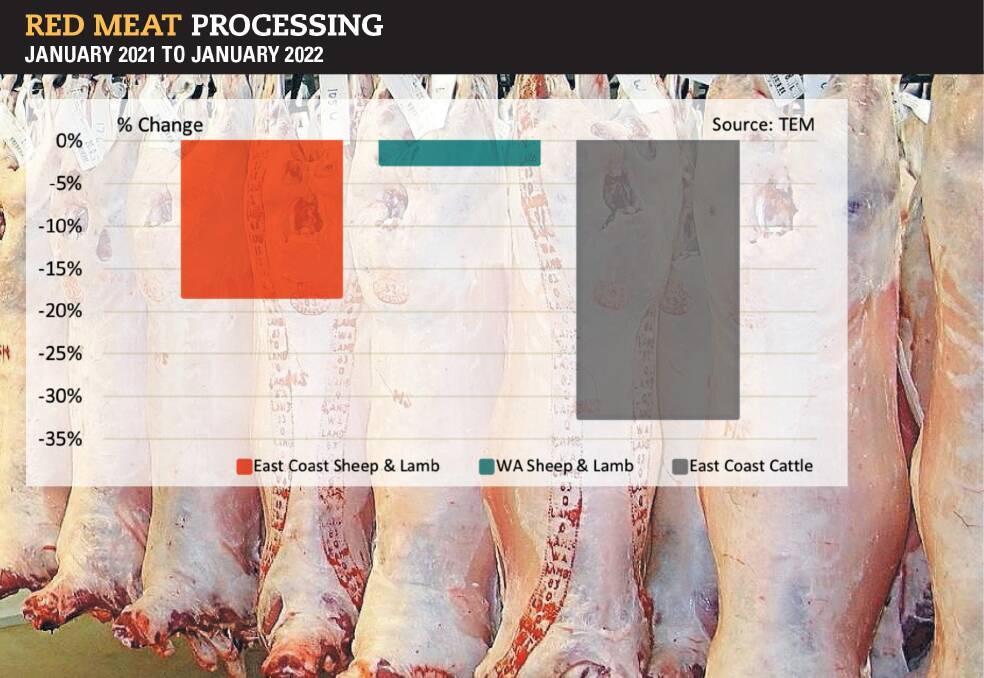
Lamb slaughter rates managed to lift last week absorbing some of the peak summer supply as producers look to turn off grown-out lambs.
Subscribe now for unlimited access to all our agricultural news
across the nation
or signup to continue reading
But constraints in slaughter capacity are still being felt through a traditionally peak January period and the impact of Omicron so far in 2022 has been brutal.
East coast lamb slaughter has fallen 29 per cent below levels seen in 2021 albeit a lift last week of 46pc or 100,000 head to 319,000 head.
Thomas Elder markets analyst Matt Dalgleish said the rapid spread of the Omicron variant has seen the nation's processing sector further hampered by workforce constraints.
"Some abattoirs are reporting staff absences of 30 to 50pc," Mr Dalgleish said.
"The impact of the spread of the virus within meat processing has been keenly felt across the east coast."
But Mr Dalgleish said volumes for sheep and lamb had been declining since 2019 due to lower flock numbers and increased flock rebuilding across the nation.
"East coast sheep and lamb slaughter averaged over 513,000 head per week in January 2019, easing to 442,000 head in 2020 and 342,000 head in 2021," he said.
"The impact of Omicron in January 2022 has seen east coast sheep and lamb slaughter fall a further 18pc from levels seen in January 2021 to record 280,000 head processed, on average per week."
RELATED READING:
He said WA meat processors has so far managed to avoid the Omicron woes on volumes due to the combination of tight border policies and effective control of the spread.
"While the unexpected extension to border closures in WA announced last week caused consternation in some circles, the state's meat processors are probably thankful it is keeping the spread of Omicron away as it's already hard enough to source and retain experienced abattoir staff in the current environment," Mr Dalgleish said.
"In 2021 average weekly WA sheep and lamb slaughter during January sat at 66,000 head and in 2022 volumes are just three per cent down, coming in at just under 65,000 head."
And although the lamb market may be showing small signs of recovery from abattoir disruptions, prices are softening with trade lamb and mutton prices falling last week.
The eastern states trade lamb indicator (ESTLI) ended the week at 838 cents per kilogram carcass weight (cwt) on Monday, down 11c/kg for the week.
But it was mutton that took the biggest hit with the national indicator dropping 45c to 575c/kg cwt with yarding up 7000 head or 77pc on the week prior.
Anecdotal evidence is suggesting processors are prioritising lamb in their kill while labour availability remains an issue during the peak January period.
Start the day with all the big news in agriculture! Sign up below to receive our daily Farmonline newsletter.


